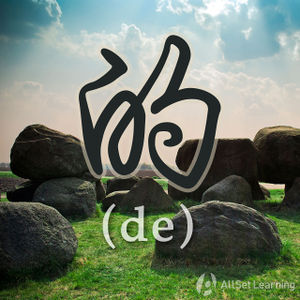Expressing possession with "de"
-
Level
-
Similar to
-
Used for
-
Keywords
In Chinese, possession is marked with the particle 的 (de), placed after the "owner" noun or noun phrase. This particle works in a similar way to apostrophe-"s" in English, but is used much more broadly in Chinese. This article highlights one of its simplest and most common usages.
Structure
Noun 1 + 的 + Noun 2
This means "Noun 1's Noun 2" (where Noun 2 belongs to Noun 1).
The structure is super simple. It will take a bit of time before you realize how truly universal this pattern is. It doesn't matter whether the "Noun 1" is a person, place, or thing, or even if it's a pronoun (like "he," "she," or "it"). The structure stays consistent.
Examples
- 我 的 老师 my teacher
- 你 的 手机 your cell phone
- 我们 的 钱 our money
- 他们 的 东西 their stuff
- 爸爸 的 车 dad's car
- 你们 的 菜 your food
- 北京 的 空气 Beijing's air
- 公司 的 老板the company's boss
- 上海 的 天气 Shanghai's weather
- 老师 的 朋友teacher's friend
See also
- Expressing close possession
- Modifying nouns with adjective + "de"
- Modifying nouns with phrase + "de"
Sources and further reading
- HSK Standard Course 1 (pp. 24) Anything Goes (无所不谈) →buy
- Integrated Chinese: Level 1, Part 1 (3rd ed) (pp. 45) Anything Goes (无所不谈) →buy
- New Practical Chinese Reader 1 (新实用汉语课本1) (pp. 87) Anything Goes (无所不谈) →buy
- New Practical Chinese Reader 1 (新实用汉语课本1)(2nd ed) (pp. 101-2) Anything Goes (无所不谈) →buy
- New Practical Chinese Reader 2 (新实用汉语课本2) (pp. 64-5) Anything Goes (无所不谈) →buy



